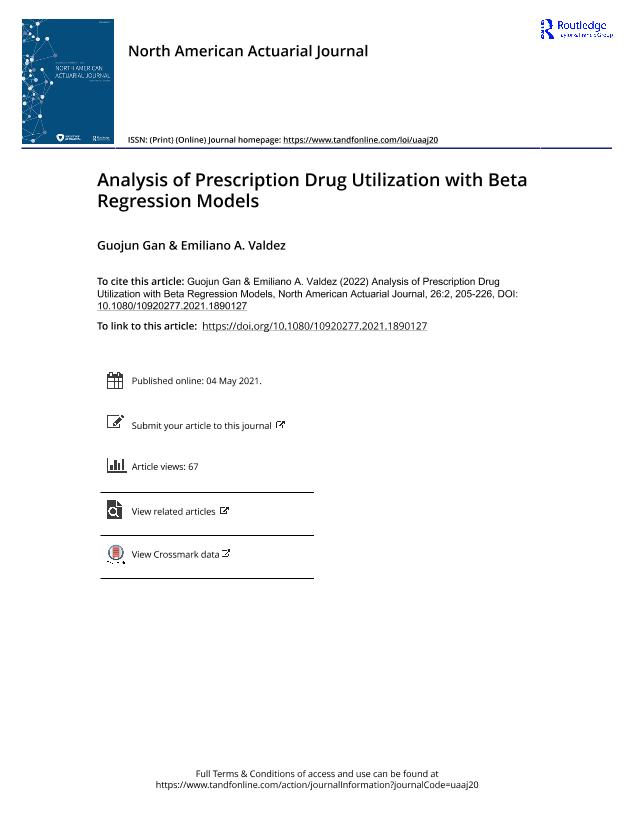Analysis of Prescription Drug Utilization with Beta Regression Models

Contenido multimedia no disponible por derechos de autor o por acceso restringido. Contacte con la institución para más información.
| Tag | 1 | 2 | Valor |
|---|---|---|---|
| LDR | 00000cab a2200000 4500 | ||
| 001 | MAP20220017589 | ||
| 003 | MAP | ||
| 005 | 20220613141619.0 | ||
| 008 | 220613e20220613esp|||p |0|||b|spa d | ||
| 040 | $aMAP$bspa$dMAP | ||
| 084 | $a6 | ||
| 100 | 1 | $0MAPA20140000234$aGan, Guojun | |
| 245 | 1 | 0 | $aAnalysis of Prescription Drug Utilization with Beta Regression Models$cGuojun Gan, Emiliano A. Valdez |
| 520 | $aThe health care sector in the United States is complex and is also a large sector that generates about 20% of the country's gross domestic product. Health care analytics has been used by researchers and practitioners to better understand the industry. In this article, we examine and demonstrate the use of Beta regression models to study the utilization of brand name drugs in the United States to understand the variability of brand name drug utilization across different areas. The models are fitted to public datasets obtained from the Medicare & Medicaid Services and the Internal Revenue Service. Integrated nested Laplace approximation (INLA) is used to perform the inference. The numerical results show that Beta regression models can fit the brand name drug claim rates well and including spatial dependence improves the performance of the Beta regression models. Such models can be used to reflect the effect of prescription drug utilization when updating an insured's health risk in a risk scoring model. | ||
| 650 | 4 | $0MAPA20080540821$aDrogas | |
| 650 | 4 | $0MAPA20080563288$aMedicamentos | |
| 650 | 4 | $0MAPA20080606633$aIndustria farmacéutica | |
| 651 | 1 | $0MAPA20080638337$aEstados Unidos | |
| 700 | 1 | $0MAPA20080648428$aValdez, Emiliano A. | |
| 773 | 0 | $wMAP20077000239$g13/06/2022 Tomo 26 Número 2 - 2022 , p. 205-226$x1092-0277$tNorth American actuarial journal$dSchaumburg : Society of Actuaries, 1997- |

